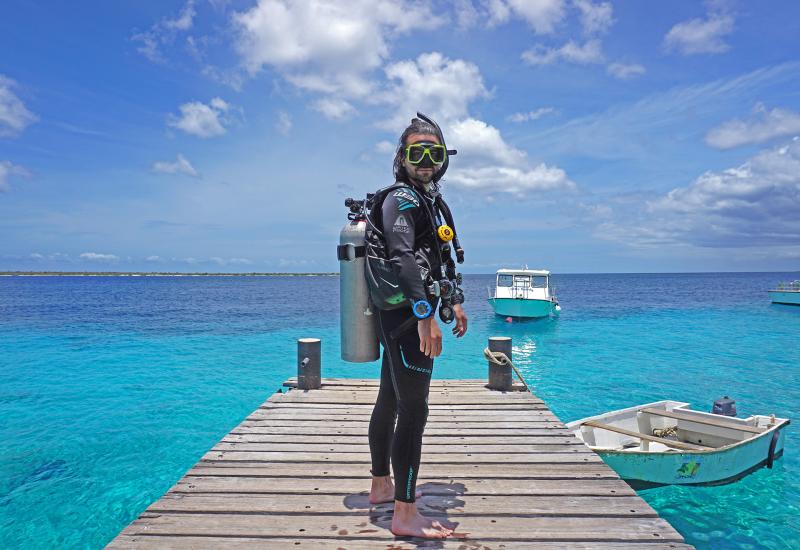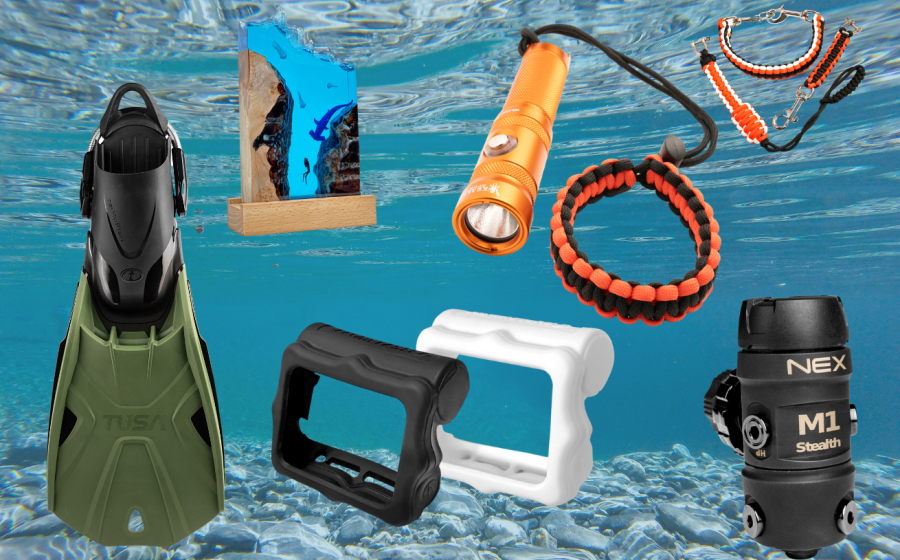Scuba Diving Training Tips: Changing Tides

Illustration by Thomas BurnsCrashing the Party
Rising waves put two scuba divers — and their camera gear — in jeopardy during a shore exit.
INCIDENT REPORT
DIVERS: Albert (Instructor, 1,100-plus dives) and Dawn (Rescue, 500-plus dives)
SITE: Southern California beach adjacent to a rock reef
CONDITIONS: Mild (waist-high) surf, 70˚F water, 30-foot visibility
Experienced divers Albert and Dawn watched the wave pattern, then entered the water with hopes of photographing sea lions. Albert carried a large DSLR camera system. Dawn towed their dive flag and float with a quarter-inch line on a caddy. After a routine mild surf entry, they descended outside the surf zone to 20 feet, then followed the reef out to 65 feet. There were no sea lions, so Albert shot photos of Dawn in a kelp stand and with a spider crab.
Reaching turn pressure at 38 minutes, they followed the bottom back. At 20 feet, they felt wave surge, which hadn’t been present outbound. Surfacing with 1,000 psi (Albert) and 1,200 psi (Dawn), they found large waves breaking almost head-high during the lulls, and higher during peak sets. Realizing that the exit would be challenging, they timed the lulls and peaks, and Albert made his camera as compact as possible. At a lull, they swam rapidly shoreward, switching to their regulators as they reached the surf zone.
Knowing that they would likely get knocked down trying to walk out, the two divers descended, crawling out of the pummeling waves on the sand. In shallow water past the main surf zone, a wave swept Dawn’s fin away as she removed it. Albert almost lost the camera system twice; it seemed OK except for scratches and sand remaining in the controls. Their dive flag was gone, but the float survived.
WHAT THEY DID WRONG
They didn’t check the surf forecast, failing to note the changing conditions before it was too late.
WHAT THEY DID RIGHT
Albert and Dawn saved ample gas for the exit. They mastered surf entries and exits before diving through surf with a large camera system. They timed the surf pattern, entering and exiting at the proper times.
FIVE TIPS TO LEARN FROM THIS INCIDENT
1. It’s not difficult to enter and exit with mild surf, but larger surf might require training and experience.
2. Significant surf rise during a dive is rare, but it happens. Check surf reports. If possible, check the surf mid-dive.
3. Large accessories complicate entering and exiting in surf. Risk of loss and damage is high if conditions become too rough.
4. Surf diving practices vary locally. See an area PADI Instructor or Dive Center for an orientation.
5. Take entering and exiting through surf into account when planning gas use. If your dive goes as planned, you should have your reserve when you’re ashore after the dive.
For more tips on how to stay safe in the water, check out our Learn From This archive.










